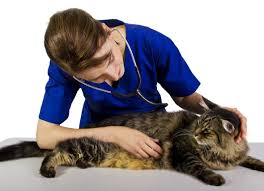
Image: petmd.com
As a board-certified small animal veterinarian, Dr. Joel Todd Leroy Prince treats both common and rare disorders in dogs and cats. Dr. Joel Todd Leroy Prince has a special interest in neurological disorders, such as feline hyperesthesia.
Also known as twitch-skin syndrome or twitchy-cat syndrome, feline hyperesthesia is an unusual disorder in which a cat’s back twitches from the shoulders to the tail. The phenomenon is visible in some cats, but others show it only through the behavior they exhibit in trying to stop the strange sensation.
The twitches of feline hyperesthesia typically happen episodically and can last from several seconds to a few minutes. An episode may first become apparent to an owner when the cat turns to look at his or her tail as though something has just bitten it.
Some cats bite at their backs or hiss at a perceived invisible attacker. Cats with severe cases may chew at their fur until they develop skin lesions and bald patches.
Veterinary science has not yet identified the source of feline hyperesthesia. Suspected causes include seizure disorders and behavioral issues. Cats that are particularly high-strung or subject to environmental stressors may be at a higher risk.
Stress reduction is a key component of treatment for this condition. Experts recommend feeding the cat a balanced diet rich in protein, but seeing a veterinarian for a specific treatment plan is the important first step.